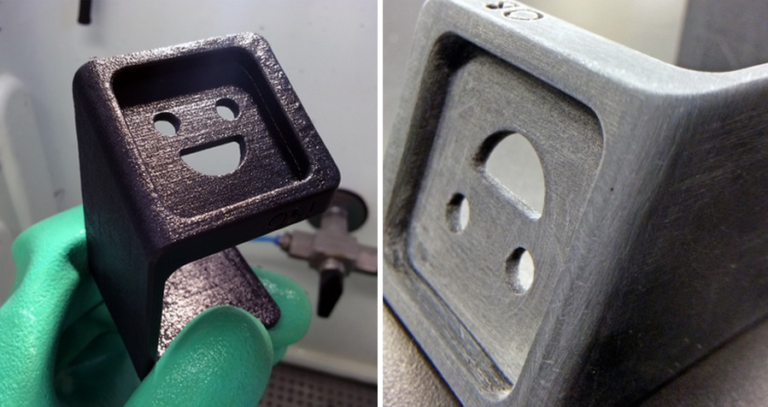3D Printing Materials
Nylon
Multi Jet Fusion (MJF)
(Multi Jet Fusion (MJF)) Grey, Black
(Multi Jet Fusion (MJF)) 0.08mm
(Multi Jet Fusion (MJF))
(Multi Jet Fusion (MJF)) $$$

3D Printing Services
Lifecycle
Lead Time
Resolution
Infill
Materials
SLS machines offer some of the largest build beds. The powder itself is relatively inexpensive comparable to the machining costs, so higher quantities of part can be cost efficient by fitting them on the same tray (reducing z-height decreases machine costs). After the powder is sintered, the parts must be allowed extra time to cool. Depending on the size of the parts, cooling time may take as long as printing time, hence the longer lead times (at least 1 day for production and 1 day for cooling). For the largest parts, printing can span several days, followed by more with cooling!
If parts are cooled too quickly, they become susceptible to shrinkage effects. The time required to cool also depends on how many parts are on the tray, and the heat transfer conditions in the cooling station as well as between different parts themselves.
| EOSINT P390, P720 | EOSINT P730, P760 | |
|---|---|---|
| Build Bed Size [x, y, z] | 340 x 340 x 620 mm | 700 x 380 x 586 mm |
| Materials | Nylon | Nylon |
| Value | $250,000 | $350,000 |
| Consumables | Material powder, build trays, cooling station, airjet/cleaning | Material powder, build trays, cooling station, airjet/cleaning |
Nylon
Max Part Size [x, y, z]
Gaps for Mating Parts
Tolerance
Min Wall Thickness
Cost Saving Tip
If using 3D printing for higher part quantity fabrication (20+), SLS will be the most cost effective additive manufacturing process.
Selective Laser Sintering uses high-powered lasers to sinter powdered material, binding it together to create a solid structure. It is often confused with another similar process called Selective Laser Melting (SLM), the difference being that it only sinters the powders together as opposed to achieving a full melt.
Parts are supported by unsintered powder in each layer, which remain spread across the build volume until each layer is fused together. Once complete, the part is removed from the remaining powder and cleaned by hand and using water/air jets.
While parts created using this technology can contain some metal, they are usually plastic composites that present a good strength to weight ratio and can be acquired relatively cheaply. For parts that must be structurally as sound as forged solid metal, DMLS is required. Still, the high level of accuracy, relatively cheap feedstock, and high temperatures achievable with SLS printing make it an incredibly useful technology with a broad range of applications ranging from architectural models to control surfaces of aircraft and surgical tools.
Learn More
Learn More


